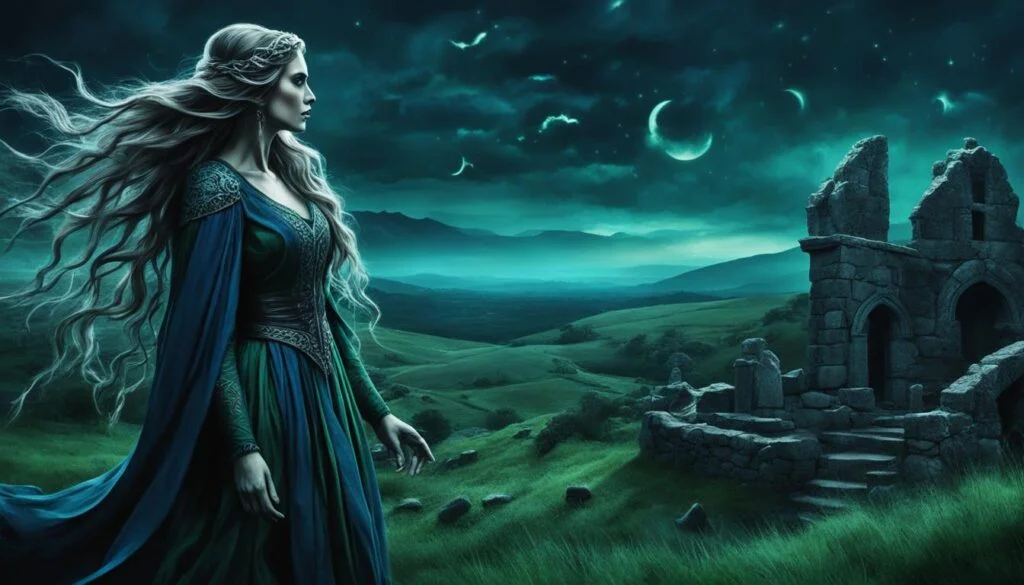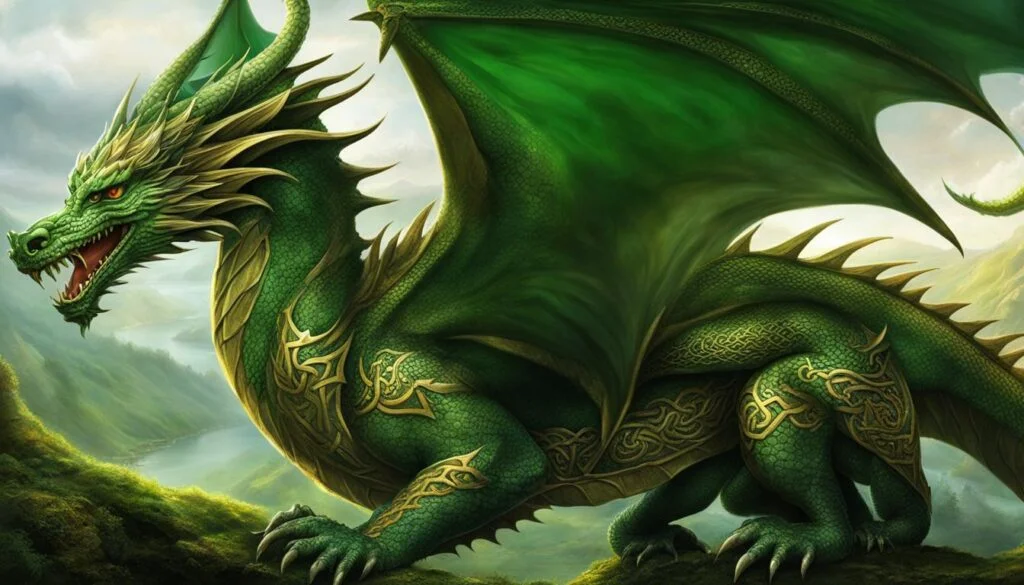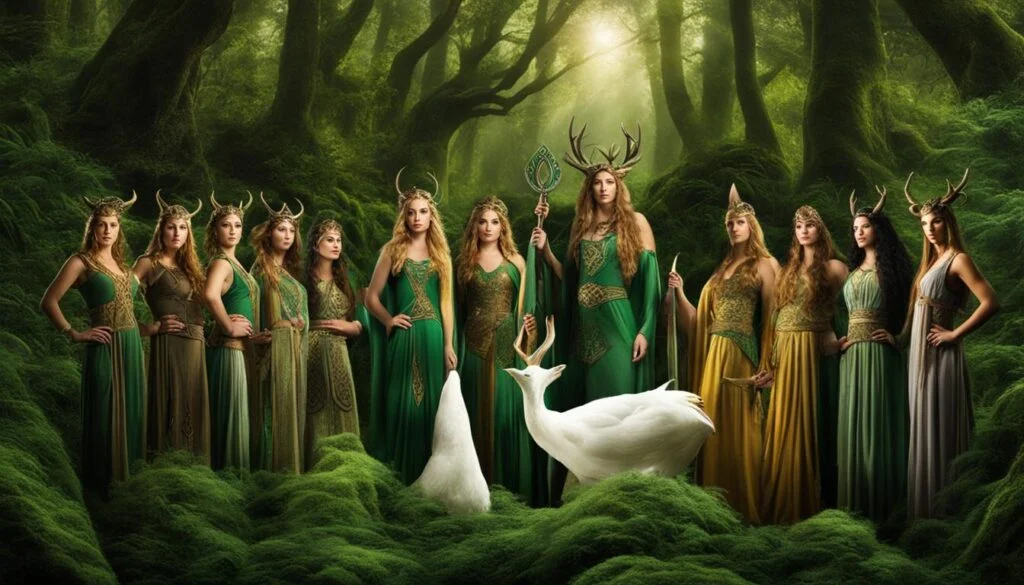The legend of the Banshee is a fascinating and eerie part of Irish folklore. Have you ever wondered what is the origin and meaning behind this haunting legend? Here, we delve into the mysterious world of the Banshee to uncover the truth behind her origins and the significance she holds in Irish culture.
Key Takeaways:
- The Banshee is a female spirit in Irish folklore who heralds the death of a family member through screaming, wailing, or keening.
- The name Banshee is derived from the Irish phrase “bean sidhe,” meaning “fairy woman.”
- Legends of the Banshee can be traced back to the 8th century, and different variations describe her appearance as a beautiful woman, a pale figure with long red hair, or an old woman with frightening red eyes.
- Not all Banshees are terrifying creatures; some are depicted as benevolent spirits who watch over their families.
- According to tradition, Banshees are said to only visit the descendants of ancient Irish families and are associated with mourning customs and funeral traditions.
Description of the Banshee
The Banshee is a mysterious and ethereal entity that is often depicted in various forms. With her long, flowing hair and otherworldly presence, the Banshee captures the imagination and instills a sense of both fascination and fear.
One common portrayal of the Banshee is that of a beautiful, pale woman with long red or silver hair. She is often seen wearing a white or silver dress, radiating an otherworldly glow that contrasts with her haunting nature. This ethereal appearance adds to the allure and mystique surrounding the Banshee.
However, the Banshee can also take on a more sinister form. In some legends, she is depicted as an old witch, dressed in black with long, grey hair and a veil covering her face. This haggish representation emphasizes the macabre aspects of the Banshee’s nature and heightens the feeling of unease associated with her presence.
Other variations of the Banshee’s forms include a headless woman carrying a bowl of blood, or a woman with frightening red eyes and a green dress. These terrifying images contribute to the folklore surrounding the Banshee and her connection to death and the supernatural.
Different accounts of the Banshee also describe variations in her height. While some legends depict her as unnaturally tall, looming over her surroundings, others portray her as short, often associated with the frailty of old age. This diversity in height further adds to the enigmatic nature of the Banshee.
Banshee Forms:
- Beautiful, pale woman with red or silver hair
- Old witch dressed in black with long, grey hair
- Headless woman carrying a bowl of blood
- Woman with frightening red eyes and a green dress
Origins of the Banshee Legend
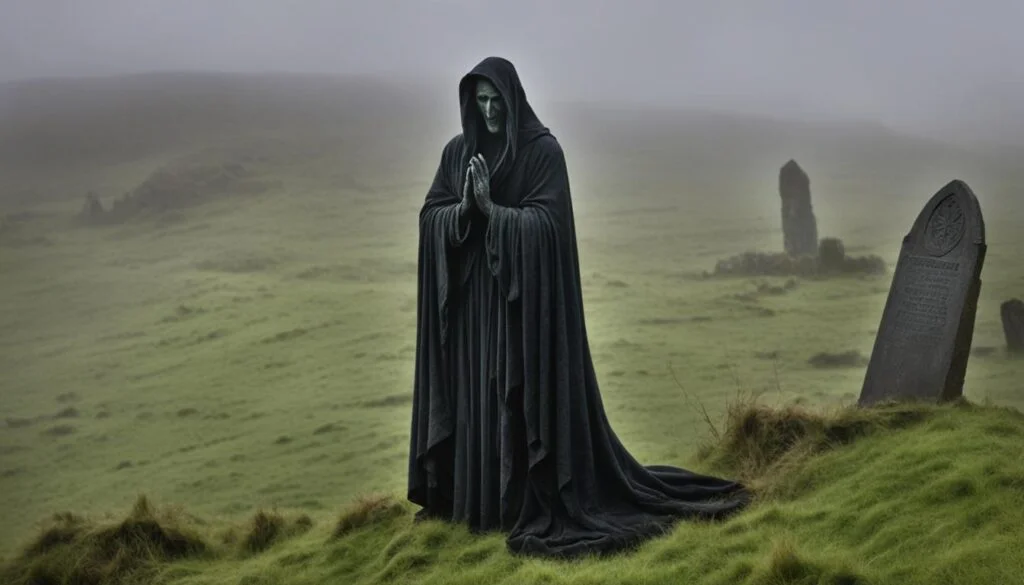
Ancient Irish Traditions and the Evolution of the Banshee Myth
The legend of the Banshee finds its roots in ancient Irish traditions and funeral customs. One notable tradition that played a significant role in shaping the Banshee myth was the practice of hiring mourners called “keeners” to sing sorrowful songs at funerals to express grief for the deceased.
These keeners, often women, filled the air with haunting melodies, their voices carrying the weight of sorrow and loss. This ancient Irish tradition of keening became an integral part of funeral rituals, marking the passage of loved ones into the afterlife.
Over time, the tales surrounding these keeners took on a supernatural twist, birthing the legend of the Banshee. As the myth evolved, it was believed that these keeners, due to their association with death and their supposed sinful nature, were doomed to become Banshees – eerie spirits linked to imminent death.
The Banshee, in her ethereal form, is said to dwell near graveyards, fairy rings, and ancient ruins, perpetuating the connection between death, spirits, and the rich folklore of Ireland.
Good and Bad Banshees
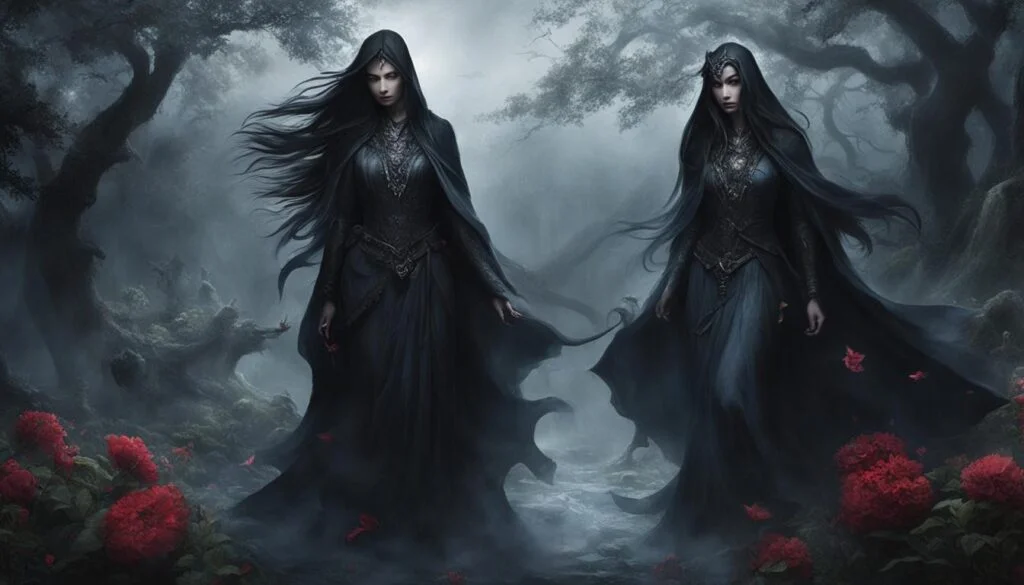
Not all Banshees are terrifying creatures. In fact, some Banshees are depicted as benevolent spirits who had strong bonds with their families in life and continue to watch over them in death. These Good Banshees appear as beautiful and enchanting women, radiating an aura of comfort and protection. They sing sorrowful songs filled with concern and love for their families, serving as a warning of impending death. Their intentions are to provide solace and prepare their loved ones for the loss that is to come.
However, alongside these Good Banshees, there exist Bad Banshees with a different set of intentions and characteristics. These Banshees are filled with deep-seated hatred and anger, and their appearances can be truly terrifying. They may manifest as frightening witches or horrifying apparitions, instilling fear in those who encounter them. Their screams are chilling and can send shivers down one’s spine. Some legends even describe Bad Banshees who derive pleasure from causing harm or death, harboring a malevolent desire to torment the living.
Despite their contrasting intentions and characteristics, both Good and Bad Banshees are an integral part of Banshee folklore. They embody the duality of the human spirit, reflecting the complexities of life, death, and the supernatural. Whether they bring comfort or terror, Banshees continue to captivate our imaginations and remind us of the enigmatic nature of the afterlife.
Associated Families
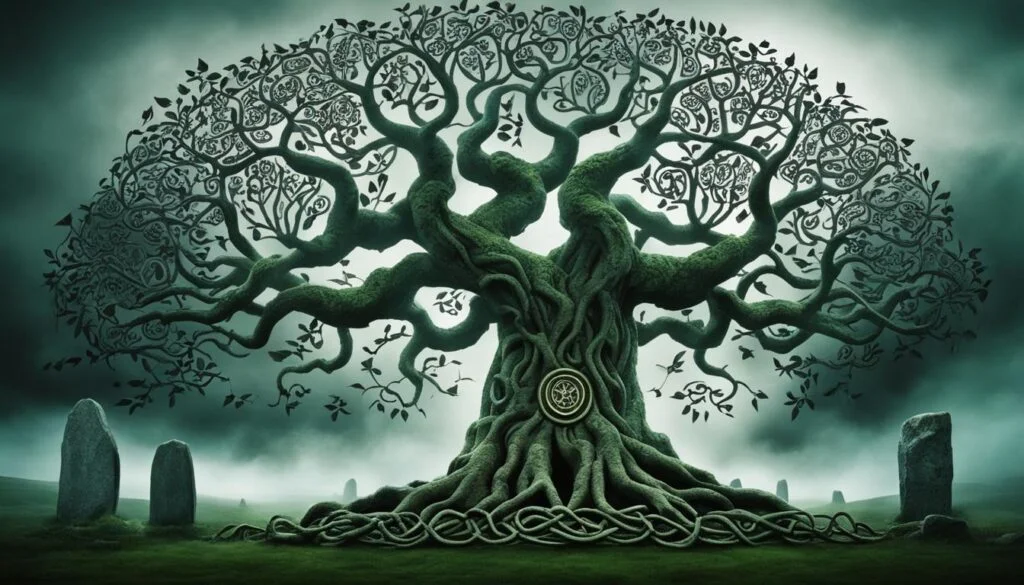
According to tradition, Banshees are said to only lament and visit the descendants of the “pure Milesian stock” of Ireland. Certain ancient Irish families are believed to be associated with Banshees, and it is even said that each family may have its own Banshee. These families are often of Goidelic origin and are believed to be honored with this fairy privilege. However, there are exceptions to this lore, as Banshees may also lament individuals who were gifted with music and song.
The Banshees and Irish Lineage:
- The legend of the Banshee is deeply intertwined with Irish lineage, specifically the “pure Milesian stock” of Ireland.
- Descendants of the ancient Irish families associated with Banshees are said to have a direct connection to this supernatural entity.
- These families, often of Goidelic origin, are believed to hold a special place in Banshee folklore.
Banshees and Noble Stock:
- Banshees are often believed to visit and lament the noble stock of Ireland, adding an element of honor and prestige to their connection.
- Members of certain aristocratic families may have their own Banshee, serving as both a reminder of their lineage and a mysterious guardian spirit.
- This association between Banshees and noble stock further enhances the allure and mystique of these supernatural beings.
In addition to noble families, Banshees may also lament individuals who have been bestowed with musical talents or possess a special gift for song. This exception to the traditional lore highlights the diverse nature of Banshee legends and their interactions with the Irish lineage.
Keening Tradition
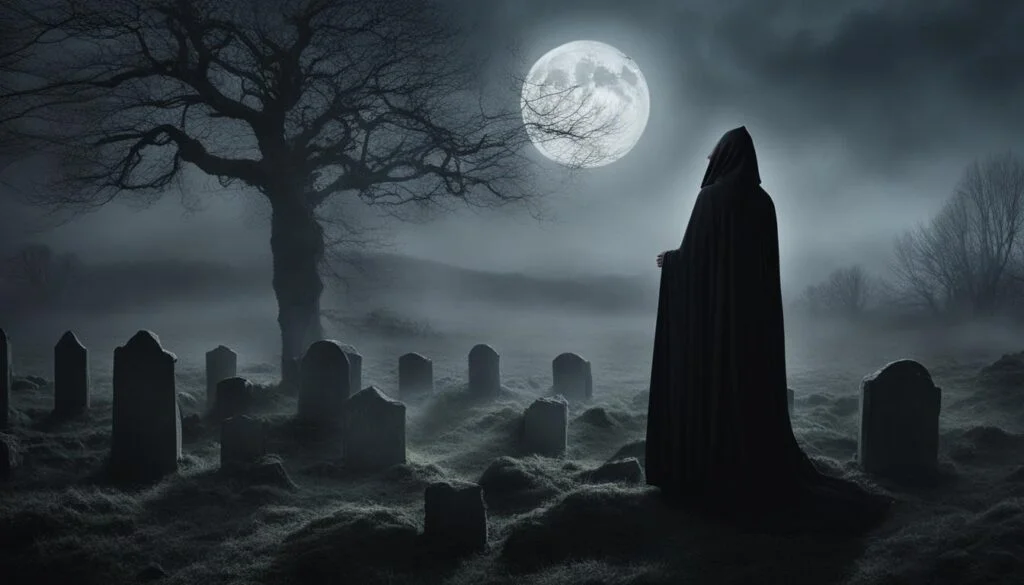
In Irish and Scottish folklore, a traditional part of mourning is the presence of a keening woman, who wails a lament called “caoineadh.” This tradition is believed to be connected to the Banshee myth. The Banshee’s keening cry is said to be the first warning of a death, even if the person has died far away. The Banshee is associated with the death coach and is said to summon it with her keening. The keening woman is often a professional and the best keeners are in high demand.
Keening tradition is a significant aspect of Irish mourning customs and plays a role in the broader belief system surrounding the Banshee. Keening, a vocal expression of grief, is performed by women who possess a particular skill in lamenting the deceased. Known as keeners, these women use their voices to convey sorrow and honor the memory of the departed. Their mourning songs, filled with raw emotion, serve as a cathartic expression of grief for the grieving families.
Keening has been an integral part of Irish funeral rituals for centuries. The keening women are hired to lead the funeral procession and provide a vocal outlet for the mourners. Their melancholic melodies and heart-wrenching cries evoke a sense of collective mourning. Through their mournful songs, they pay tribute to the deceased, highlighting the significance of their life and the impact of their passing.
- Keening tradition has deep roots in Irish culture and is often intertwined with local beliefs about the Banshee. The Banshee’s keen, believed to be her mournful cry, is thought to accompany the imminent death of a loved one. This connection between the Banshee and the keening tradition adds to the mystique and intrigue surrounding the legend of the Banshee.
- Keening is considered a respected art form, requiring a unique set of vocal skills and emotional depth. Skilled keeners are admired for their ability to channel their grief into hauntingly beautiful melodies, capturing the essence of the pain and loss experienced by the bereaved.
- Although the origins of keening are uncertain, it has become deeply ingrained in Irish mourning customs and continues to be practiced in some communities today. The tradition reflects the deep bond between the living and the deceased, showcasing the enduring nature of grief and the power of communal support in times of loss.
The ritual of keening serves as a poignant reminder of the universal experience of loss and the need for emotional release during times of mourning. In Irish folklore, the Banshee’s role in this tradition further emphasizes her connection to death and the supernatural realm. She is seen as both a messenger and a companion, sharing in the collective grief of those who have lost a loved one.
Banshee Legends and Other Supernatural Beings
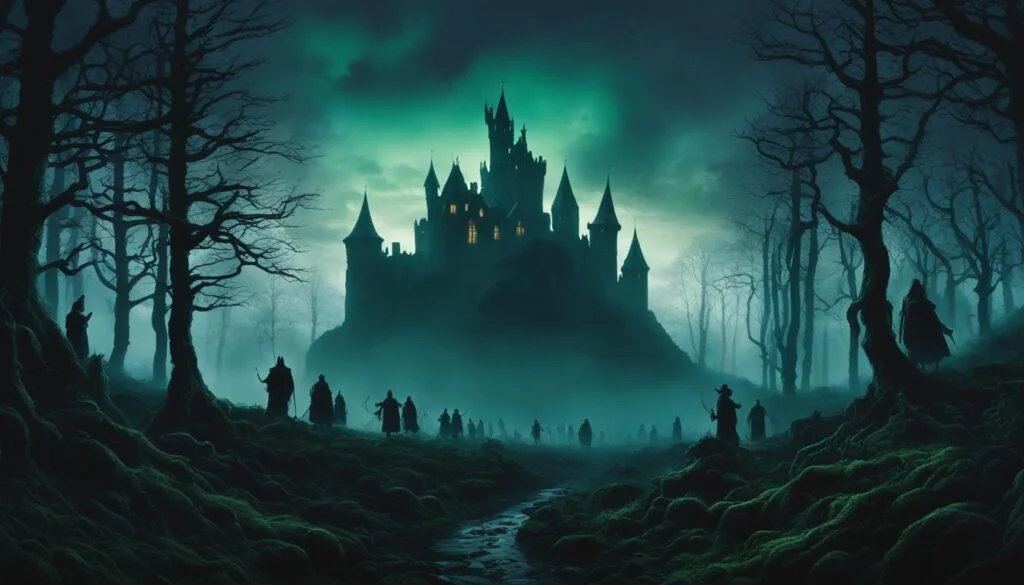
The Banshee is just one of many supernatural beings in Irish folklore. Alongside her, there are various other fascinating legends and stories surrounding different creatures. These include the Baobhan Sith, Cailleach, Clíodhna, and many others. Each of these supernatural beings holds a unique place in Irish mythology, capturing the imagination of generations.
The Banshee, with her association with death and mourning, is often seen as a death omen. Believed to be a fairy woman, she is connected to the rich fairy folklore of Ireland. According to mythology, she resides in the mythologically important tumuli or “mounds” of Ireland, adding to her mysterious allure.
Other Supernatural Beings in Irish Folklore:
- The Baobhan Sith is a vampire-like creature from Scottish and Irish folklore. This female entity seduces men before revealing her true nature and draining them of their life force.
- The Cailleach is a divine hag in Irish and Scottish folklore. Associated with winter and the natural world, she is both a creator and destroyer, representing the cycle of life and death.
- Clíodhna is a legendary queen and fairy of the Tuatha de Danann. Known as the “Queen of the Fairies,” she has power over love and beauty and is often associated with the sea.
These supernatural beings, including the Banshee, play a significant role in shaping Irish folklore and adding depth to its mythological landscape. Their stories have been passed down through generations, captivating and intriguing those who delve into the rich tapestry of Irish mythology.
Variations of the Banshee Legend
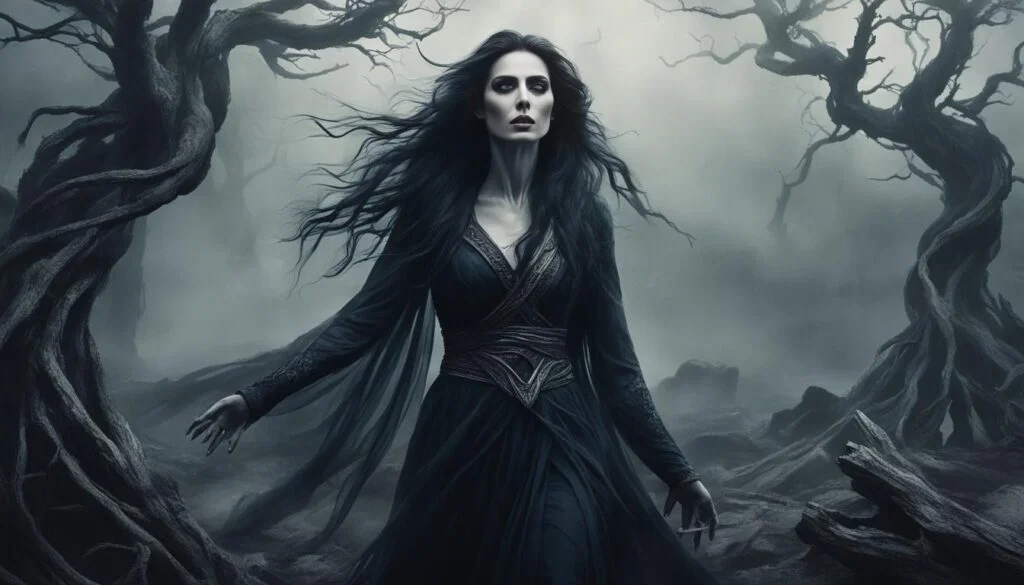
The legend of the Banshee has evolved and taken different interpretations over time and across different regions of Ireland. This has resulted in a rich tapestry of Banshee folklore with various variations and depictions of this supernatural entity.
One common variation of the Banshee legend portrays her as a ghost who met a tragic and violent end. In these accounts, the Banshee is said to appear to individuals or families as a haunting specter, foretelling their imminent demise. This interpretation emphasizes the Banshee’s connection to death and the afterlife.
On the other hand, some legends present the Banshee as a young girl who suffered a brutal and untimely death. These stories focus on the Banshee’s innocence and the anguish of her untimely passing. Often depicted as a sorrowful spirit, she is believed to wander the earth, trapped between the world of the living and the dead.
The variations in the Banshee’s appearance further contribute to the diversity of the legend. In some regions, the Banshee is described as a beautiful woman, radiating an otherworldly charm. This portrayal highlights her ethereal allure and serves as a contrast to her association with death. In contrast, other legends depict the Banshee as a horrifying hag, with a terrifying visage and a chilling presence. This interpretation emphasizes the Banshee’s role as a foreboding and macabre figure.
These variations add depth and complexity to the Banshee folklore, shedding light on the multifaceted nature of this legendary entity. The differing interpretations of the Banshee across different regions of Ireland demonstrate the rich cultural tapestry of the country and the enduring fascination with the supernatural.
Banshee in Modern Culture
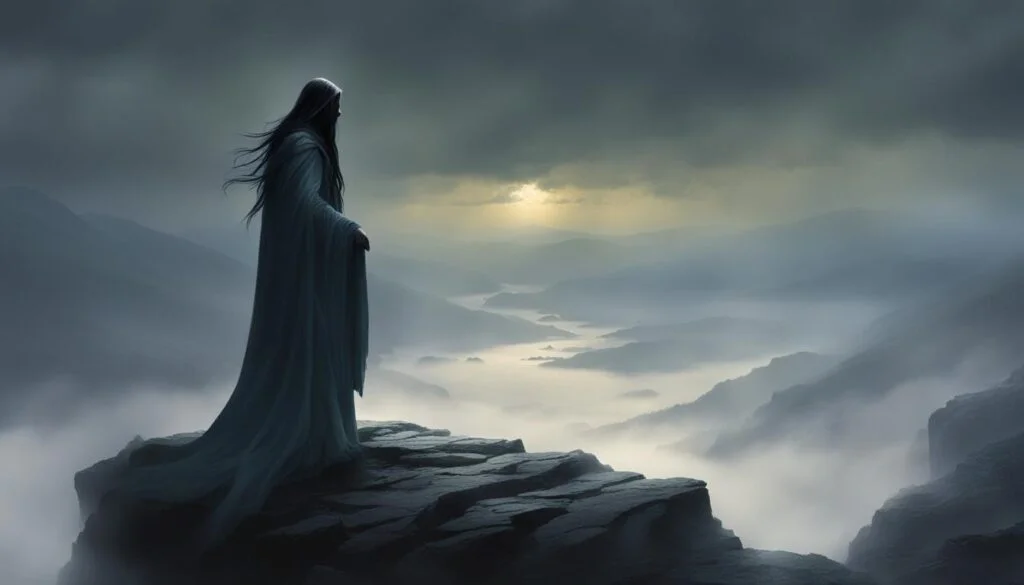
The legend of the Banshee has had a profound influence on Irish culture, permeating various artistic mediums. From literature to art, music to film and TV, the Banshee continues to captivate and terrify audiences.
Banshee in Literature
Many authors have woven the Banshee into their literary works, utilizing her as a powerful symbol of death and the supernatural. Through vivid descriptions and compelling narratives, the Banshee’s eerie presence adds depth and intrigue to the stories. Some notable works featuring the Banshee include Bram Stoker’s “Dracula” and W.B. Yeats’ poetry collection “The Wind Among the Reeds.”
Banshee in Art
Artists have long been fascinated by the haunting beauty of the Banshee, depicting her in various forms and interpretations. Paintings and sculptures capture the ethereal essence of the Banshee, often emphasizing her flowing hair, pale complexion, and mournful expression. These artworks serve as visual representations of the legend, allowing viewers to experience the eerie allure of the Banshee.
Banshee in Music
The Banshee’s lament has inspired musicians to create haunting melodies that evoke a sense of mystery and unease. Whether through traditional Celtic music or contemporary compositions, the Banshee’s cry is often echoed in the haunting tunes. Her presence in music adds an atmospheric quality, heightening the emotional impact and immersing listeners in the lore of the Banshee.
Banshee in Film and TV
From classic horror films to modern television shows, the Banshee continues to make appearances, solidifying her status as a terrifying legend. Her piercing scream and ominous presence provide a chilling backdrop to horror narratives, leaving audiences on the edge of their seats. Notable portrayals of the Banshee can be found in movies like “Darby O’Gill and the Little People” and the TV series “Teen Wolf.”
In conclusion, the Banshee remains a prominent figure in modern culture, continuing to inspire and frighten audiences across different artistic platforms. Whether through literature, art, music, or on-screen adaptations, the Banshee’s legend lives on, reminding us of the enduring power of supernatural folklore.
Conclusion
The Banshee legend holds a prominent place in the rich tapestry of Irish folklore, captivating generations with its eerie and haunting nature. Whether regarded as a forewarning of impending death or a protective guardian spirit, the Banshee continues to both fascinate and terrify. From ancient traditions to modern interpretations, the presence of the Banshee in Irish culture underscores her enduring legacy and the power of storytelling.
The Banshee, with her unmistakable cry and ethereal presence, serves as a reminder of Ireland’s mythical heritage. Her role as a harbinger of death or a loving ancestral spirit has been ingrained in the hearts and minds of the Irish people for centuries. The Banshee is an integral part of the country’s collective imagination, embodying the deep connection between the supernatural and everyday life.
The legacy of the Banshee extends beyond folklore, permeating various aspects of Irish culture. We find her in works of literature, where authors have used her as a symbol of death and the otherworldly. Artists have captured her likeness in mesmerizing paintings and sculptures, showcasing the ethereal beauty that defines her. Musicians have composed haunting melodies inspired by her melancholic lament, adding yet another layer to her mystique.
In popular culture, the Banshee has transcended traditional boundaries, making appearances in horror films and television shows worldwide. Her chilling presence continues to evoke fear and curiosity, ensuring that the legend of the Banshee will endure for generations to come. She stands as a testament to the power of folklore to seep into every aspect of human consciousness, leaving an indelible mark on the shared imagination of a culture.
FAQ
What is the origin of the Banshee legend?
The Banshee legend can be traced back to ancient Irish traditions and funeral customs. It is believed to have evolved from the practice of “keeners,” women who would sing sorrowful songs at funerals to mourn the deceased.
What does the Banshee represent?
The Banshee is believed to be a death omen, heralding the impending death of a family member. She is often seen as a supernatural being associated with mourning and the afterlife.
How does the Banshee appear?
The Banshee is often depicted as a floating female spirit with long, flowing hair. She can appear as a beautiful, pale woman with long red or silver hair, wearing a white or silver dress. She may also take the form of an old witch dressed in black with long grey hair and a veil over her face.
What is the Banshee’s role in Irish folklore?
The Banshee is considered a supernatural being in Irish folklore, closely associated with death and mourning. She is believed to be a fairy woman who resides in the mythologically important tumuli or “mounds” of Ireland.
Are all Banshees terrifying creatures?
No, not all Banshees are depicted as horrifying beings. Some legends describe Banshees as good spirits who watch over their families and sing sorrowful songs filled with concern and love. They serve as a warning of impending death.
Are certain families associated with Banshees?
Yes, according to tradition, Banshees are said to only lament and visit the descendants of certain ancient Irish families, often of Goidelic origin. It is believed that each family may have its own Banshee.
What is the role of keening in the Banshee legend?
In Irish and Scottish folklore, the presence of a keening woman who wails a lament called “caoineadh” is a traditional part of mourning. The Banshee’s keening cry is said to be the first warning of a death, even if the person has died far away.
Are there other supernatural beings in Irish folklore?
Yes, there are various legends and stories surrounding creatures such as the Baobhan Sith, Cailleach, Clíodhna, and many others in Irish folklore. The Banshee is just one of many supernatural beings in this rich tradition.
How has the Banshee legend evolved over time?
The legend of the Banshee has taken different interpretations and variations over time and across different regions of Ireland. Some legends describe her as a ghost who died a violent death, while others depict her as a young girl who suffered a brutal death.
How has the Banshee influenced modern culture?
The Banshee is a prominent figure in Irish literature, art, music, and popular culture. Many authors have incorporated her into their works, and artists have captured her eerie beauty. She continues to make appearances in horror films and TV shows, cementing her status as a terrifying legend.
What is the significance of the Banshee legend?
The Banshee legend is deeply ingrained in Irish folklore and showcases the rich mythological heritage of Ireland. Her presence as a death omen and guardian spirit has captivated generations and serves as a reminder of the power of storytelling.


